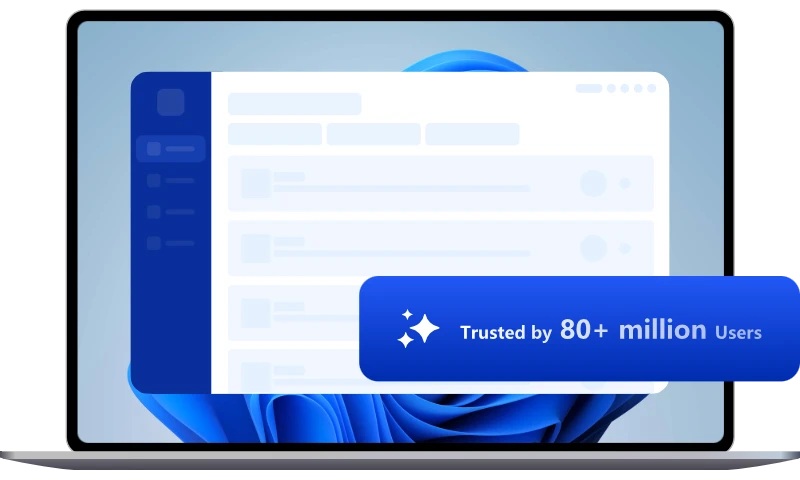How to Solve Your Computer Is Low On Memory in Windows 10/11
If you encountered a "Your computer is low on memory" error, try the following methods and tips to solve it.
Many users have encountered a message like "Your computer is low on memory" when using computers running Windows 10, Windows 11 or earlier OS. This may point to insufficient virtual memory, insufficient space on the C drive, or due to some malicious files infected by a virus or malware.
When the low on memory message appears, you can first run a full scan with Windows Defender or a third-party antivirus software. If you are sure that the problem is not caused by a virus or malware, then try the following methods to solve the problem.
Way 1. Check the memory occupied by apps and processes
Some processes that use too much memory may trigger low memory errors on your computer. Therefore, when there is a high RAM or CPU usage problem in Windows OS, you can end the processes that are using too much memory in Task Manager.
1. Press Ctrl + Shift + Esc to open Task Manager and click on "Performance" at the top to see the current memory usage.
2. If the memory consumption is already high, when we continue to open some other apps, the available memory will become smaller and smaller, and then the system response will be slower and slower. At this point, we can switch to the "Processes" tab of the Task Manager, and then click on "Memory" to allow the system to sort by the size of the occupied memory.
3. This way, we can visually see which programs are taking up a lot of memory on the system, thus causing the system to run slower. If there is an application that takes up a lot of memory that you don't need to use at the moment, then you can right-click on the process and select "End task" to close it, thus freeing up more memory.
4. Then go back to "Performance" in Task Manager to check the current available memory and you will see that the system has more memory available than before.
This method is applicable to the case where we have too much software installed on the computer and there are many startup programs, such as some players, chat apps, etc. With Task Manager, we can get detailed information about the memory we are currently using and determine if we want to end this program or remove them from the system completely.
Way 2. Adjust the virtual memory properly
The so-called virtual memory is an area of the hard disk that is used as physical memory (RAM), but because the read and write speed of the hard disk and memory is far from comparable, so there will be a big difference in performance.
When the system memory is not enough, you can find that our hard drive light will keep blinking and the computer's response time is particularly slow, this is when the system is using the virtual memory on the hard drive to cope with our physical memory shortage.
The system is using the virtual memory on the hard drive to cope with our physical memory shortage.
1. Right click on "This PC", select "Properties", scroll down the screen in the pop-up settings window, find and select "Advanced system settings".
2. Then find the Performance section in the Advanced tab of the System Properties window, and click the “Settings” button next to it.
3. Under the "Visual Effects" tab, click on "Adjust for best performance". This allows you to sacrifice visual effects to reduce the use of hardware resources.
4. Next, switch to the "Advanced" tab and see the current "Virtual Memory" size.
5. In case your computer's memory is really not enough, you can click "Change" to set it manually.
6. On the pop-up window, deselect "Automatically manage paging file size for all drives" and select "Custom size" instead of "System managed size". However, please note that the virtual memory is not as large as possible. In general, do not exceed 2 times the physical memory, otherwise the system may run more slowly.
Way 3. Run a disk cleanup
If the low memory prompt is due to insufficient space on the C drive, then it is best to do a complete cleanup of all the applications and temporary files on your computer.
To uninstall applications, you don't use often, you can navigate to Settings > Apps > Apps & features, where you will find a list of the applications you have on your computer. Find the app you don't use often or don't need anymore, select it and click the "Uninstall" button at the bottom right to uninstall it completely.
To clean up temporary files and junk files, open File Explorer, right-click on the drive you want to clean up (e.g. C:) and click on "Disk Cleanup" under the General tab in the Properties window.
The system will automatically calculate the space that can be freed on this drive, after it is finished, select the file type you want to delete on the pop-up screen, and click "OK" to start cleaning.
Way 4. Increase physical memory
When the computer is running, virtual memory is only used if there is not enough physical memory. Therefore, it's recommended to open apps reasonably, carry out disk cleanup and Virus scanning regularly, otherwise the accumulation of junk files and Trojan virus will take up most of your memory location, making your system operation slower and bring a great burden to the computer.
If the above methods do not work, and the memory is still not sufficient, installing additional memory may be the most obvious way to improve the speed of the system.

